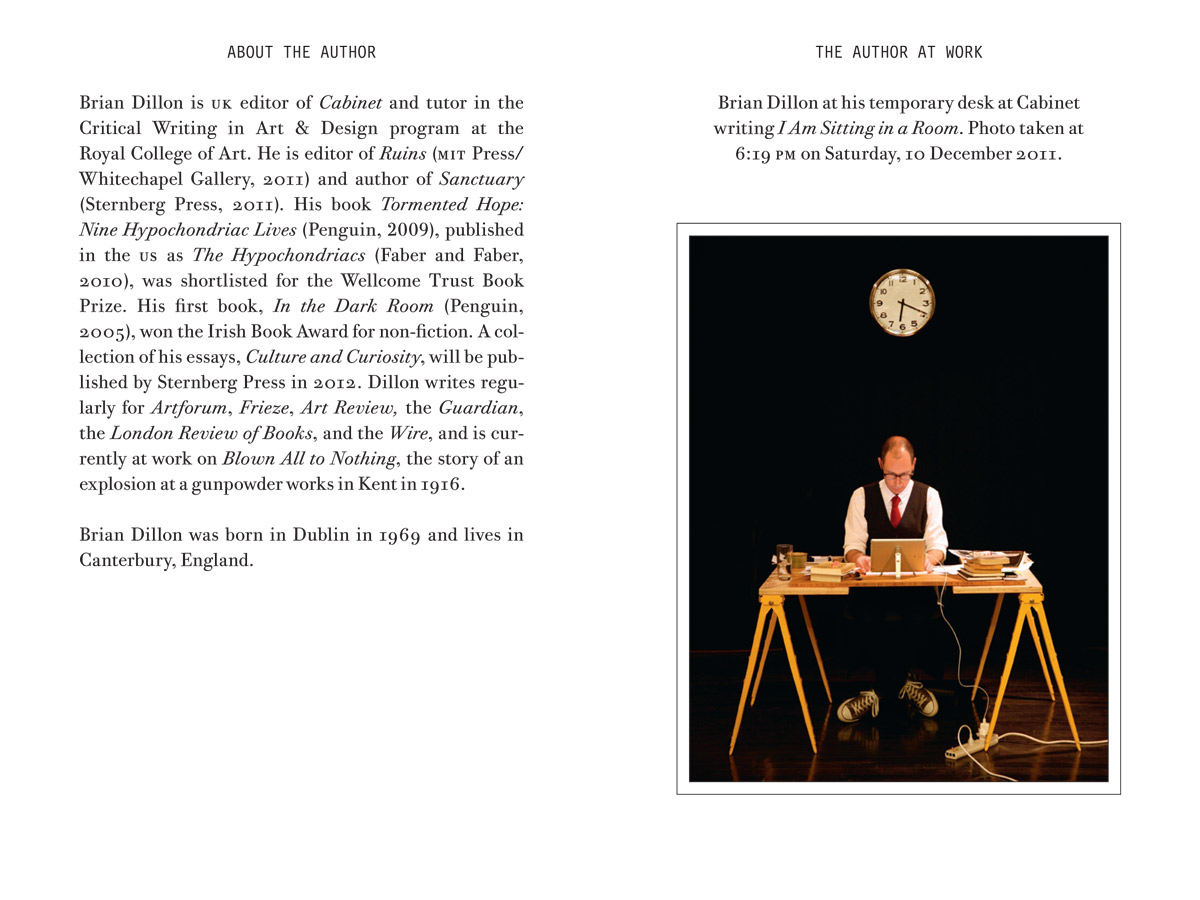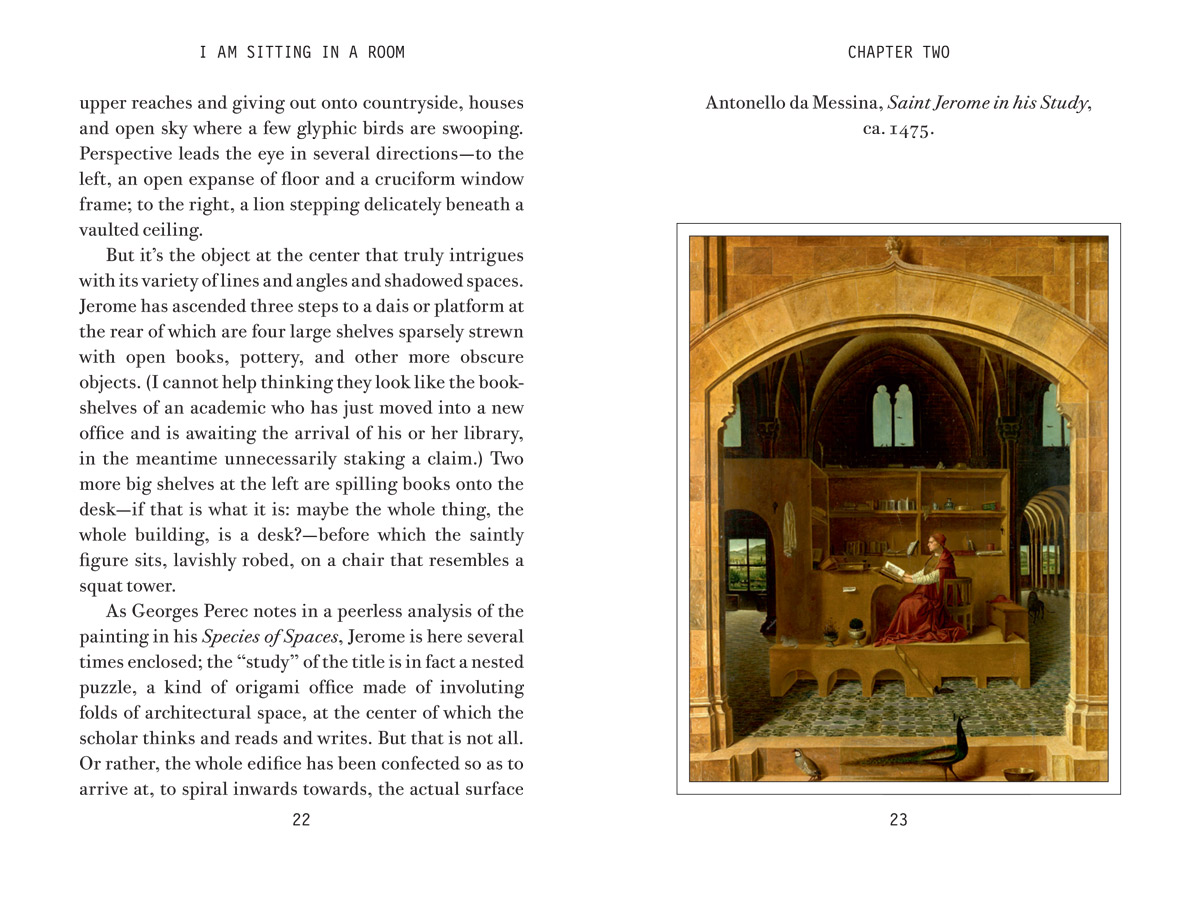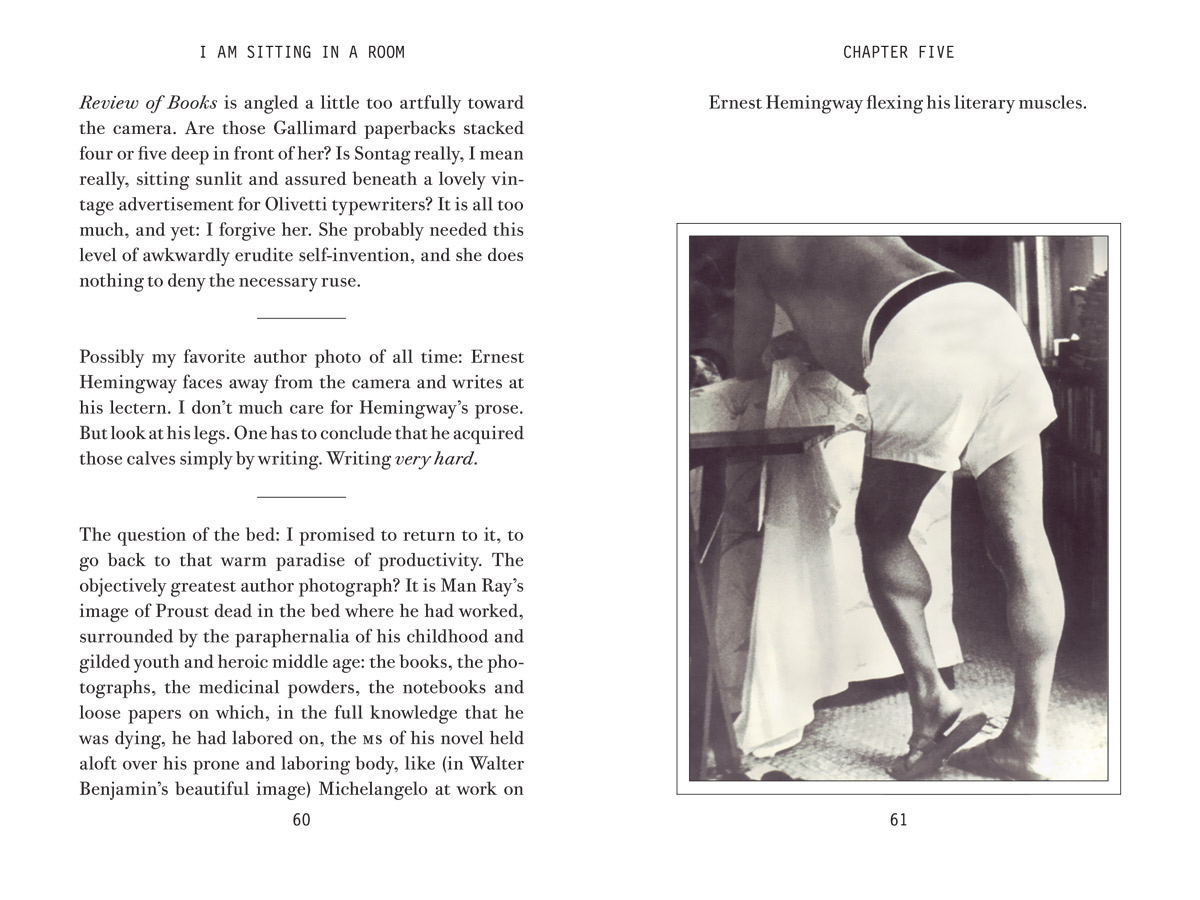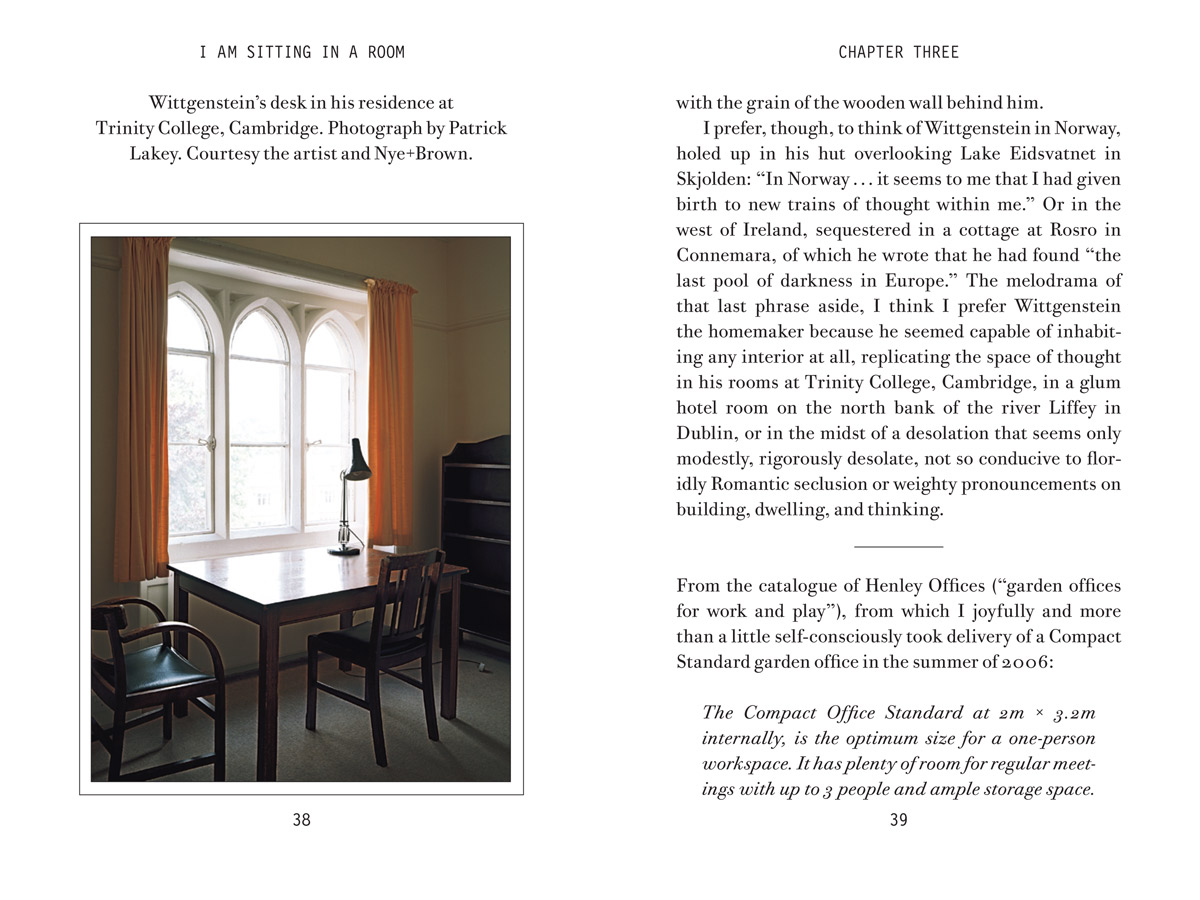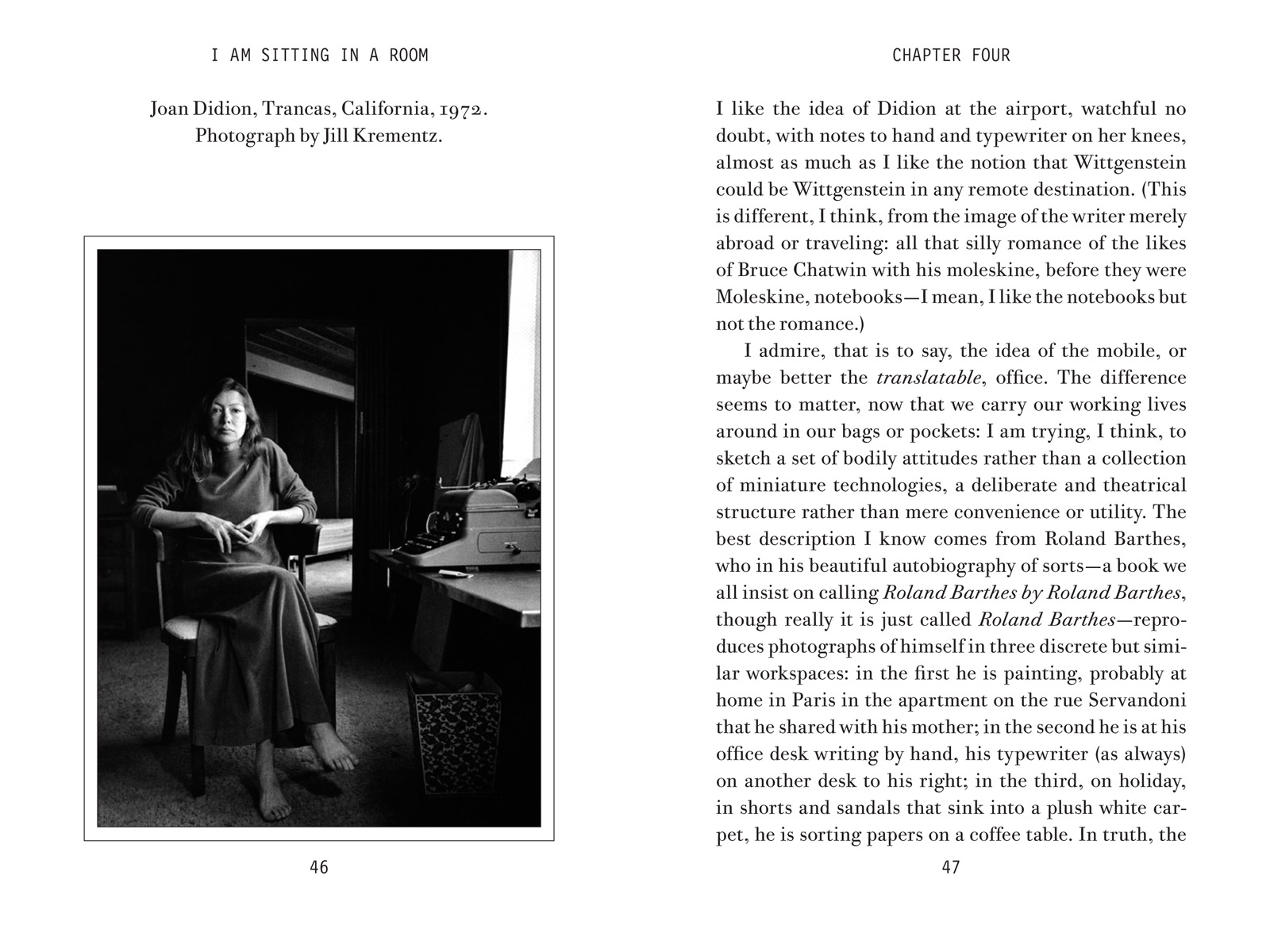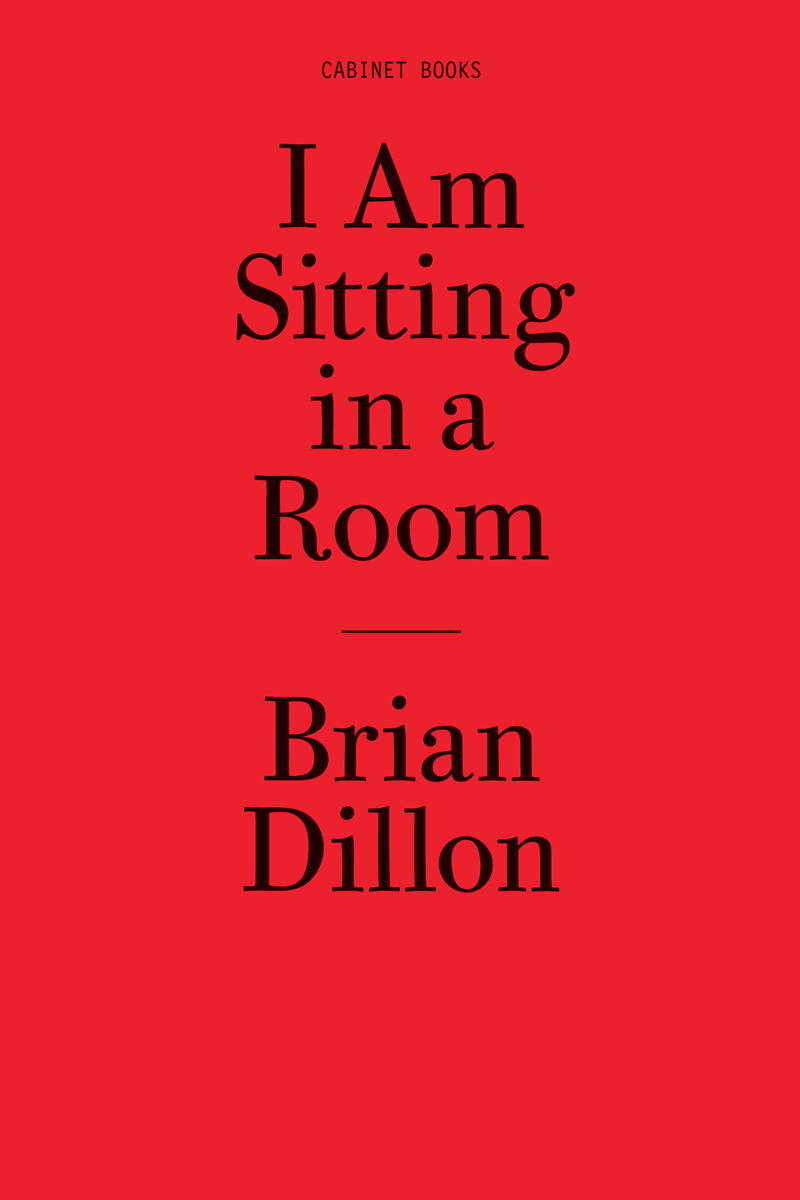
I Am Sitting in a Room by Brian Dillon
Softcover, 74 pages, 5 (w) × 7.5 (h) inches
Color and black-and-white illustrations
Cabinet Books, 2011
Support independent publishing: $12 directly from us; $10 for subscribers
Ebook also available on our shop: $8
The inaugural volume in Cabinet’s new “24-Hour Book” series, Brian Dillon’s book explores the scenography and architecture of writing itself. Inspired in part by Georges Perec’s short fragment in Species of Spaces on Antonello da Messina’s painting of St. Jerome in his study, Dillon’s text is both a personal reflection on the theatrics of the study, the library, and the office, and a historical consideration of such writerly paraphernalia as Proust’s bed, Nabokov’s index cards, and Philip Roth’s moustache.
Dillon, who arrived at 10 am on a Saturday at Cabinet’s Brooklyn event space without any prepared text, of course also had to remain open to the contingencies of an unfamiliar writing environment, peculiar and perhaps slightly dodgy take-out food, a makeshift bed, and a capricious heating system, not to mention the obvious pressures of working under extreme time constraints. If that were not enough, this particular scene of writing was a public one, with curious onlookers dropping in during the process to watch the author “at work.”
Dillon’s tome was completed at 10 am the next morning, and was immediately sent to a cohort of nearly fifty professors and graduate students, convened by Princeton University’s Interdisciplinary Doctoral Program in the Humanities (IHUM), who had volunteered to read and respond under similar constraints. Over the next twenty-four hours, the experiment continued as the respondents labored over their essays, which were collected by 10 am on Monday.
The resulting book, Reception Rooms: An Anthology of Recent Responses to Brian Dillon’s I Am Sitting in a Room, was then presented at a symposium organized by IHUM that very afternoon to consider the past, present, and future of such experiments in the radical compression of culture. The discussion took up many of the same questions as the book itself does, including what it means to write, under such conditions, a “good book”; what else there is to write; the threat of failure, and its possible forms; and the various types of constraint faced by authors, from the journalist’s deadline to Oulipian rules to deathbed exigency.
About Cabinet’s “24-Hour Book” series
Inspired by literary precedents such as automatic writing, by the resourcefulness of the bricoleur making do with what is at hand, and by the openness toward chance that all artistic production under severe constraint must necessarily incorporate, this new series invites distinguished authors and artists to be incarcerated in an unfamiliar space to complete a project from start to finish within twenty-four hours.
About Brian Dillon
Brian Dillon is UK editor of Cabinet and tutor in the Critical Writing in Art & Design program at the Royal College of Art. He is editor of Ruins (MIT Press/Whitechapel Gallery, 2011) and author of Sanctuary (Sternberg Press, 2011). His book Tormented Hope: Nine Hypochondriac Lives (Penguin, 2009), published in the US as The Hypochondriacs (Faber and Faber, 2010), was shortlisted for the Wellcome Trust Book Prize. His first book, In the Dark Room (Penguin, 2005), won the Irish Book Award for non-fiction. A collection of his essays, Culture and Curiosity, will be published by Sternberg Press in 2012. Dillon writes regularly for Artforum, Frieze, Art Review, the Guardian, the London Review of Books, and the Wire, and is currently at work on Blown All to Nothing, the story of an explosion at a gunpowder works in Kent in 1916. Born in Dublin in 1969, Dillon lives in Canterbury, England.
Cabinet wishes to thank the Andy Warhol Foundation for the Visual Arts for their support of this project.
